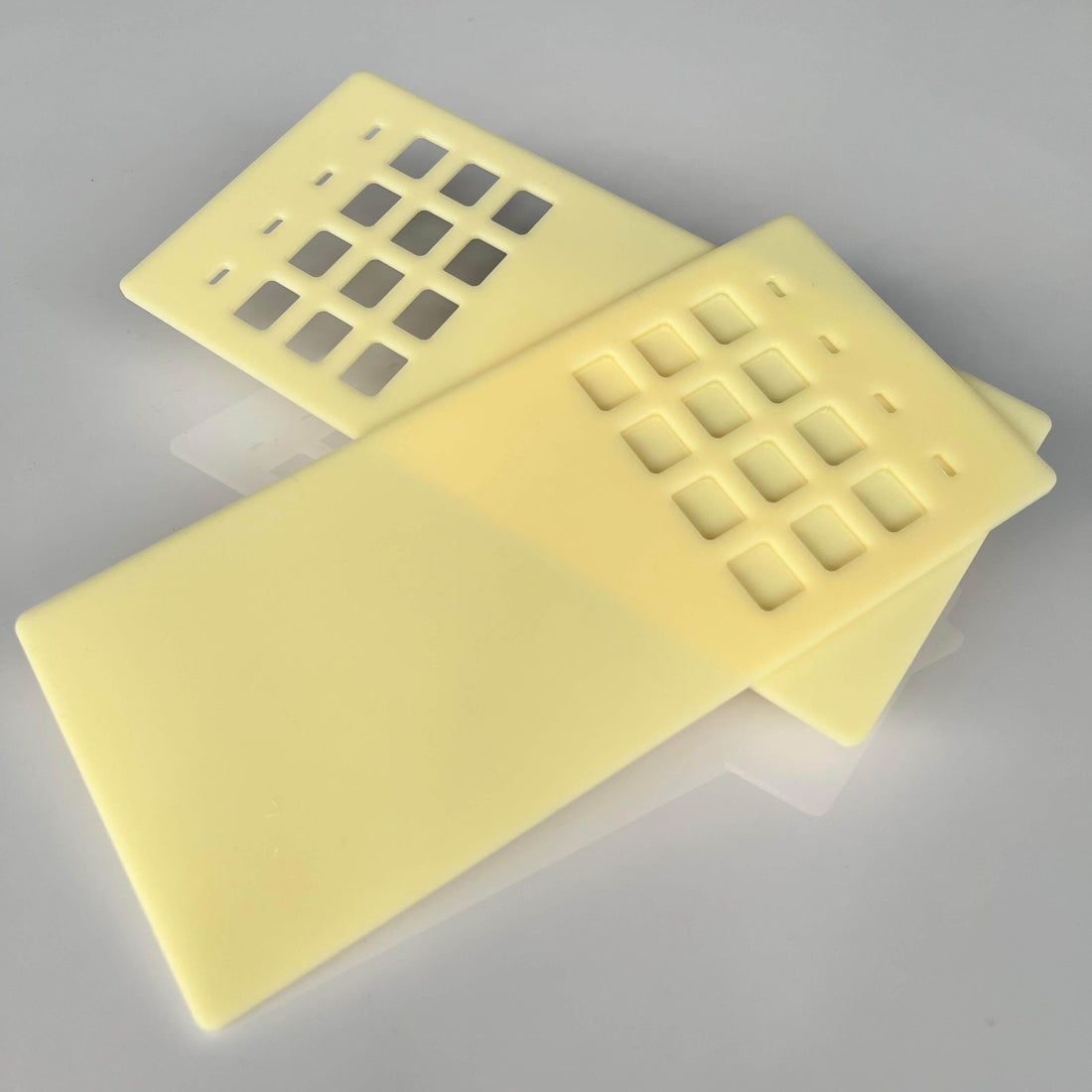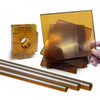ABS, or acrylonitrile butadiene styrene, plastics have become a popular alternative to traditional manufacturing materials like metal, wood, and more. ABS plastics provide durability, strength, and ease of fabrication at a lower overall cost compared to many standard materials.
For manufacturers looking to reduce expenses and improve profit margins, transitioning even partial production to ABS plastics can provide measurable cost reductions. This guide will cover the key benefits of ABS plastics and provide a price comparison to help you determine if switching from traditional materials to ABS could benefit your bottom line.

Brief Background on Common Traditional Materials
Before analyzing the pricing and fabrication benefits of ABS plastics, it helps to understand the landscape of materials that manufacturers typically rely on:
-
Metals - Steel, aluminum, and alloys are go-to metals for fabrication. Metals provide immense strength but can have high machining costs. They also often require secondary finishing and coatings.

- Wood - Timber, MDF, plywood, and more get utilized for production. Yet moisture, rotting, and degradation can lead to replacement costs. More finishing steps are also usually needed with wood materials.
- Glass - Glass provides optical clarity and a sleek look but requires meticulous machining and finishing. Durability issues and fragility also persist with glass.
- Advanced Composites - Carbon fiber and fiberglass composites grant high strength-to-weight ratios. However, raw material and fabrication expenses tend to be very high.
Many manufacturers gravitate towards these traditional materials simply because that's what they've always used. However, transitioning to ABS plastics could provide better performance at lower overall part production costs.
The Benefits of Using ABS Plastics
ABS plastics have distinct advantages that make them suitable for widespread manufacturing and production applications:
Durability and Strength
Properly formulated ABS materials are highly durable, resisting cracking and deforming over years of use.Yield strength and tensile strength properties allow ABS to withstand high loads and forces. ABS demonstrates high impact resistance as well, absorbing shocks and impacts much better than materials like glass or brittle plastics.
Lighter Weight Compared to Metals
ABS plastics have a density around 1.05 g/cm^3, which translates to weight savings compared to metals like steel and aluminum. Redesigning parts to use lightweight yet strong ABS can benefit industries where reducing mass is critical, like automotive and aerospace.
Resilient and Impact Resistant
The composition of ABS materials reduces the likelihood of fracturing, shattering, or splintering when exposed to impacts. Objects made from ABS plastics can better handle drops, shocks, vibrations, and load forces compared to glass, wood, and thin sheet metals.
Easier to Fabricate Complex or Detailed Shapes
The thermoplastic properties of ABS allow it to be injection molded into complex, highly-detailed shapes with tighter tolerances versus traditional machining methods. Intricate shapes, undercuts, thin walls, and precision features can be replicated consistently.

Cost Savings of ABS Plastics Production
Now that we've covered the inherent benefits of ABS plastics, let's examine how switching to ABS for manufacturing and fabrication can lower your overall production costs.
Lower Part Fabrication Prices with Injection Molding
Injection molding allows ABS plastic resins to be formed into intricate, complex parts with speed and precision. Most other materials require extensive CNC machining or carving to achieve detailed shapes. The injection molding process substantially reduces fabrication expenses by streamlining production.
Reduced Machining and Finishing Needs
Since injection molded ABS parts can be produced to high tolerances with smooth surfaces, they require less post-molding machining and finishing than typical manufacturing materials. Less grinding, sanding, polishing and finishing steps translate directly to cost savings on labor, tooling, and time.
Faster Manufacturing with Less Waste
Compared to subtractive fabrication of materials like metal and wood, injecting molding ABS creates complex parts in mere minutes or hours rather than days. There are also virtually no material scrap or waste expenses. Efficient injection techniques and ABS' recyclability minimize environmental impact.
Case Study: Company X Reduces Manufacturing Expenses by 28%
One case study from Major Car Company X displayed the significant cost benefits of shifting from aluminum alloy to ABS plastic for interior trim components. By transitioning to ABS, they reduced part fabrication time from 1 hour down to 7 minutes while achieving tighter tolerances. Scrap waste declined 75% as well. Overall, Company X realized a 28% drop in manufacturing costs after switching to ABS plastics.

ABS Plastics vs. Traditional Materials Price Comparison
To determine if shifting your production lines to ABS plastics makes financial sense, it helps to review pricing studies and cost data comparisons:
Research Analyzing Cost Benefits of ABS Plastics vs Aluminum Parts
A 2019 study published in Manufacturing Journal compared the total part production prices for a high-volume automotive part between aluminum and ABS plastics. Results showed ABS plastic part fabrication pricing was approximately 40% lower per part. Net shaping via injection molding was 80% faster than CNC machining the aluminum.
Studies on ABS Plastic Part Fabrication Pricing vs Steel Part Fabrication
According to analysis by the International Society for Plastics Engineers, ABS and other engineering thermoplastics provide substantial cost benefits over machining steel, stainless steel, and other metals. The study cited 60-90% reductions in fabrication time and 50-75% lower part costs with ABS plastics.
Guide to Transitioning from Metal Materials to Cost-Saving ABS Plastics
For manufacturers that traditionally relied on metal materials, switching entirely to ABS may not make sense initially. A balanced approach of using ABS for select component parts that benefit the most from plastic properties can maximize cost savings. Prioritize high complexity, detailed, or lightweight parts for first steps.

Making the Switch to ABS Plastics
Hopefully the case for adopting ABS plastics into your manufacturing process is clear. Here are some tips to smooth your transition:
Tips for Transitioning Manufacturing and Production Lines
- Gradually introduce ABS materials for new product lines first before phasing out metals and woods across legacy products. This allows your team time to adapt.
- Ensure proper ABS plastic selection - Work with your supplier to pick the ideal ABS grade for your needs like heat/chemical resistance or static dissipating.
- Factor in secondary finishing - While ABS needs less finishing work than other materials, some polish or paint may be required depending on aesthetics needed.

Where to Find Quality Engineered ABS Plastic Parts
Reliable ABS plastic suppliers are key when switching materials. Look for:
- Experience with manufacturing-grade ABS materials rather than consumer plastics
- Range of ABS formulations to meet requirements
- Engineering support to help select ideal materials
- Robust quality control and consistency procedures
- Domestic as well as overseas supply chain options
The Future of Efficient and Affordable ABS Plastics
As technology improves, expect additive manufacturing to complement injection molding for ABS plastics. Multi-material 3D printing will enable complex ABS parts at relatively low costs. Automation will also streamline finishing steps more and more for plastics.

Conclusion - Unlock Savings With a Shift to ABS Plastics
Transitioning to ABS plastics for all or even partial production lines can provide measurable cost reductions for manufacturers while maintaining quality. Sourcing custom formulated and engineered ABS materials from trusted suppliers gives you the best chance at maximizing benefits over traditional metal, wood and glass materials.
The slew of research and analyses focused on ABS plastics verifies significant decreases in overall fabrication pricing when compared to incumbent materials. Durable ABS plastic parts can be produced faster, with less waste, and tighter tolerances through injection molding. Combined with finishing automation, ABS unlocks major savings.
This guide aimed to spotlight the financial upsides and price comparisons that highlight why evaluating a switch to ABS plastics could be advantageous. Just remember to take an incremental approach, enlist supplier expertise, and focus on high potential components first when getting started. Follow these tips to make your road to improved profit margins through ABS plastics smoother.







